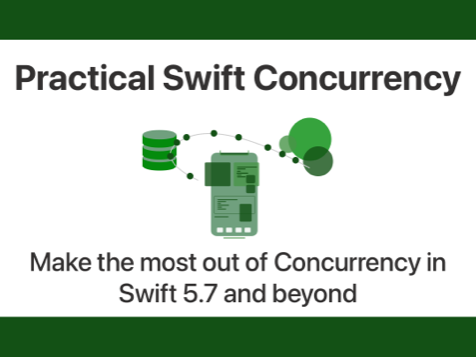35 Results for: "codable"
When you’re decoding JSON, you’ll run into situations where you’ll have to decode dates every once in a while. Most commonly you’ll probably be dealing with dates that conform to the ISO-8601 standard but there’s also a good chance that you’ll have to deal with different date formats. In this post, we’ll take a look […]
Read postIn a previous post, I explained how you can make your NSManagedObject subclasses codable. This was a somewhat tedious process that involves a bunch of manual work. Specifically because the most convenient way I’ve found wasn’t all that convenient. It’s easy to forget to set your managed object context on your decoder’s user info dictionary […]
Read postSplitting a JSON object into an enum and an associated object with Codable
Published on: April 5, 2021Decoding data, like JSON, is often relatively straightforward. For a lot of use cases, you won’t need to know or understand a lot more than what I explain in this post. However, sometimes you need to dive deeper into Codable, and you end up writing custom encoding or decoding logic like I explain in this […]
Read postIn the introductory post for this series you learned the basics of decoding and encoding JSON to and from your Swift structs. In that post, you learned that your JSON object is essentially a dictionary, and that the JSON’s dictionary key’s are mapped to your Swift object’s properties. When encoding, your Swift properties are used […]
Read postVirtually every modern application needs some way to retrieve, and use, data from a remote source. This data is commonly fetched by making a network request to a webserver that returns data in a JSON format. When you’re working with Javascript, this JSON data can be easily decoded into a Javascript object. Javascript doesn’t have […]
Read postOften, you’ll want you Swift models to resemble JSON that’s produced by an external source, like a server, as closely as possible. However, there are times when the JSON you receive is nested several levels deep and you might not consider this appropriate or needed for your application. Or maybe you’re only interested in a […]
Read postIf you’ve ever wanted to decode a bunch of JSON data into NSManagedObject instances you’ve probably noticed that this isn’t a straightforward exercise. With plain structs, you can conform your struct to Codable and you convert the struct from and to JSON data automatically. For an NSManagedObject subclass it’s not that easy. If your Core […]
Read postNote: After publishing this article, it has been brought to my attention that the folks from @pointfreeco have a very similar solution for the problems I outline in this post. It’s called tagged and implements the same features I cover in this post with several useful extensions. If you like this post and plan to […]
Read postYou have probably seen and used a property list file at some point in your iOS journey. I know you have because every iOS app has an Info.plist file. It’s possible to create and store your own .plist files to hold on to certain data, like user preferences that you don’t want to store in […]
Read postWhat is Approachable Concurrency in Xcode 26?
Published on: July 9, 2025Xcode 26 allows developers to opt-in to several of Swift 6.2’s features that will make concurrency more approachable to developers through a compiler setting called “Approachable Concurrency” or SWIFT_APPROACHABLE_CONCURRENCY. In this post, we’ll take a look at how to enable approachable concurrency, and which compiler settings are affected by it. How to enable approachable concurrency […]
Read post

